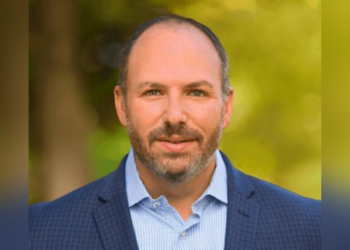The US healthcare industry has been under immense strain during the COVID-19 pandemic. While battling the pandemic on the front lines, healthcare communities have had to contend with many other challenges like staffing shortages, depleted finances, and figuring out how to navigate the myriad of COVID-related rules and restrictions.
Healthcare professionals have faced increased liabilities throughout the pandemic period, according to Karl Olson, vice president, professional & management liability practice leader, Burns & Wilcox Brokerage, San Francisco. For example, many hospitals had to cancel elective surgeries, causing the phenomenon of deferred care. This is problematic for healthcare professionals as they may be held liable if the deferred care causes further problems or a more severe diagnosis.
“We are starting to see utilization rates come back, and deferred care, routine check-ups, and wellness are certainly returning to pre-pandemic levels,” said Olson, but there are other challenges that healthcare communities continue to face. For example, staffing shortages have been a problem throughout the pandemic, with many healthcare professionals contracting or being exposed to the virus and having to self-isolate for the safety of their patients. The stretched resources have made basic healthcare more challenging, endangering the long-term health of Americans, according to Olson. At the same time, many smaller, rural hospitals and medical centers were forced to close after running into financial difficulties. Read next: Chubb launches new hospital indemnity product “Our focus on partnering with our clients to define these risks has certainly changed,” Olson added. “Helping our retail brokers identify how an insured is navigating with PPE, or performing on debt covenants, or defining their own risk through these uncertain times takes a lot more work.” Insurance carriers in the healthcare space have reacted to this uncertainty with rate increases, coverage restrictions, and they’ve become far more selective on risk tolerance. Some of the national carriers have exited the marketplace altogether, largely due to concerns over proposed tort reform and the ongoing rise in severity of medical malpractice lawsuits. As always, rate increases differ between line of business. Olson explained that healthcare organizations require a wide swathe of coverages, including medical malpractice, professional liability, errors and omissions (E&O), a “robust” directors and officers (D&O) liability solution, employment practices liability (EPL), and cyber liability insurance. “For some of the medical malpractice, we’ve seen [rate increases of] 0-5%, but in D&O, we’ve seen increases anywhere from 10-50%. But I do think the pace of rate increases is slowing. We’re actually seeing some decreases because of new capacity in the marketplace,” said Olson. “The hot button is cyber liability where […] there’s been such a pullback in underwriting guidelines and appetites that sometimes it’s difficult to even get a quote.” Read more: CEO on decision support in the health insurance and employee benefits arena In challenging markets, the value of a thorough insurance coverage submission really shines through, according to Olson. He said that in healthcare, the submission boils down to three questions: What’s being performed? How much of it is being performed? Who is doing it? “In the COVID pandemic over the last few years, it’s been more difficult for people to measure out exactly all of their exposures, and to predict what 2022 is going to look like, or 2023,” he commented. “It’s looking at how labs, pharmacies, surgery centers measure their exposures. It could be a health plan, or dental practice, or community clinic, and how they administer the risk management. It could be looking at the prevalence of physicians or nurse staffing, or assisted living facilities technicians, and what staffing levels and resources they all have. All of these metrics impact the quality of risk. In terms of building a thorough submission, if we don’t have that information, it’s dead on arrival.” Looking ahead for the remainder of 2022, Olson expects the underwriters will continue to be highly selective on what risks they’re willing to entertain and quote. “I think there will be continued new capacity and new market entrants, supported by experienced executives and underwriting teams,” he added. “It’ll be a little bit different – less opportunistic, and more pursuits of carriers deploying capacity and new products. My advice [to agents and clients] is to start early, be thorough, address any issues or concerns, and get ahead of the underwriters. There’s a lot of information out there and addressing any concerns early is paramount to a smoother process.”









